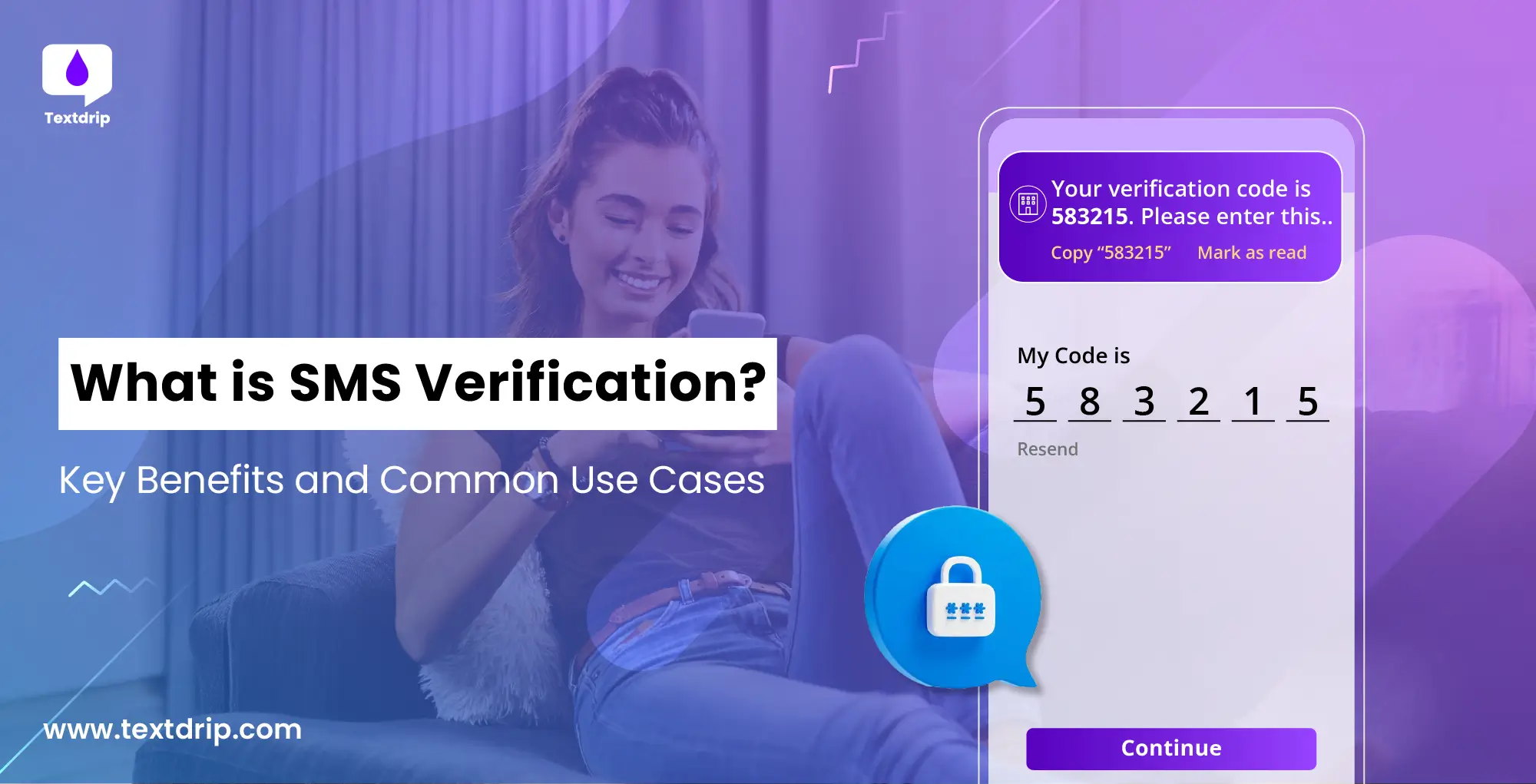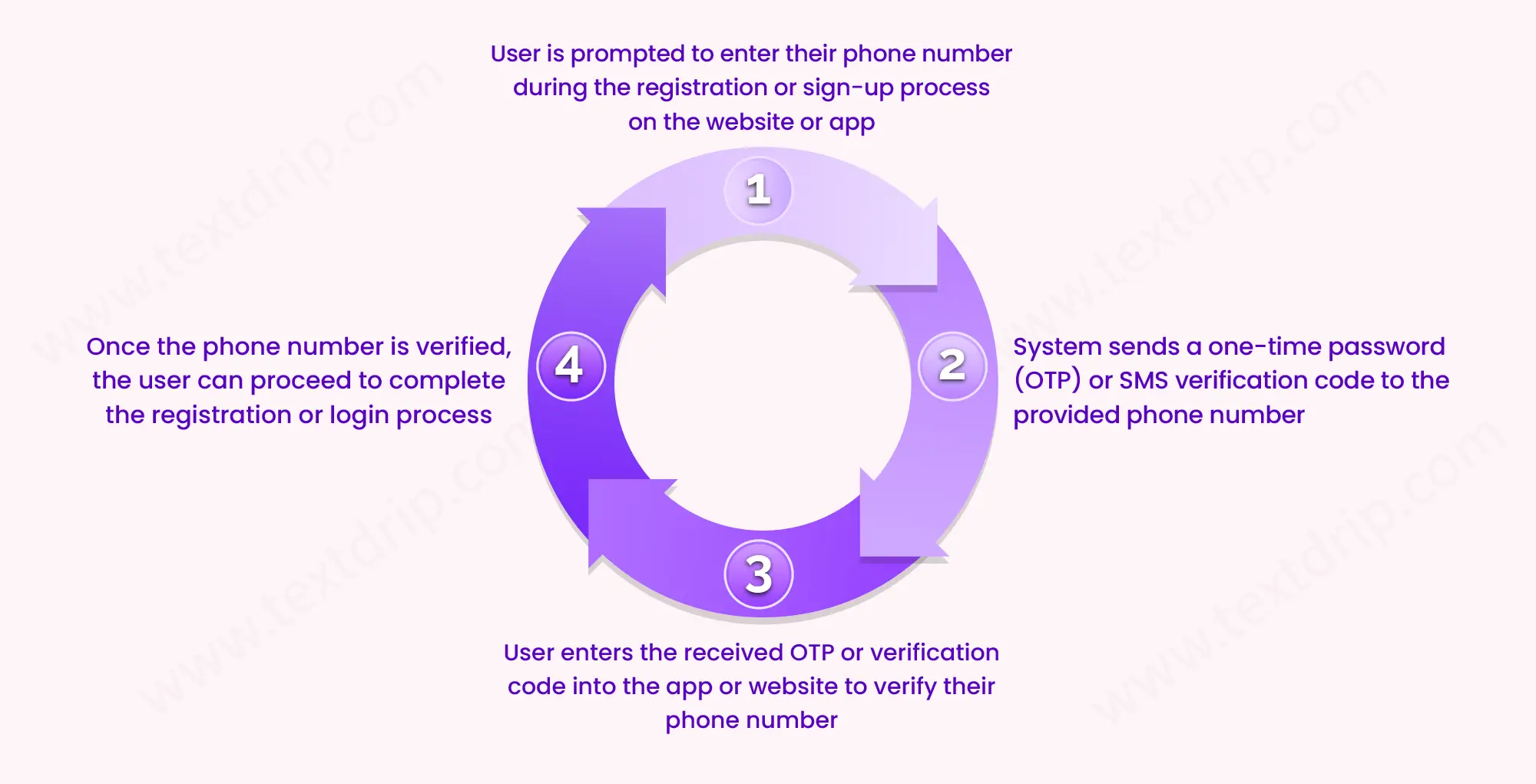31 Dec 2024
Philip Portman

31 Dec 2024
Philip Portman
From personal conversations and retirement funds to confidential business data, the password is the behind-the-scenes actor of our lives. So much of our personal and professional life lies behind it. Over the years, passwords have been the go-to method for securing our digital assets. However, now things have changed. With each passing day, cyber threats are becoming more sophisticated. Therefore, passwords alone are not enough to secure data. According to a study, in 2021, more than 80% of data breaches were associated with weak, reused, or stolen passwords. SMS verification code can help mitigate the risk of compromised passwords.
So, what is SMS verification? How does SMS code verification work? What are their pros and cons? Read on to find its answer.
SMS verification is the security method that uses a text message to confirm a user’s identity. It adds an additional layer of security to online transactions, account logins, and other digital interactions with apps and websites. Businesses must employ SMS verification to secure their users and themselves from scammers and cyber threats. This method uses 2FA – two-factor authentication, OTP – one-time password, and MFA – multi-factor authentication system to improve security. This method delivers a unique verification code to users’ mobile phone numbers through SMS.
In SMS verification, users’ need to confirm their identity through the unique and temporary code sent to their mobile phone via text message. This SMS verification code reduces the possibility of unauthorized access and enhances protection against cyber threats.
Let’s check out the step-by-step process involved in SMS verification.

Here are some steps that are involved in the SMS verification process.
If you are wondering why SMS verification is important, the simple answer is that it ensures secure access, helps prevent fraud, and improves user trust.
How?
Let’s understand it in brief.
SMS verification keeps your users safe and prevents their sensitive information from falling into the wrong hands. Passwords alone can’t do it because some users use the same passwords everywhere or use easy-to-guess passwords. Therefore, database hacking or social engineering can easily hack these passwords. Here is where SMS code verification comes into the picture. The unique code is sent to the users’ phone number, making their account more secure.
According to the Google Study, SMS verification code blocks automated bot attacks by 100%, bulk fishing attacks by 96% and targeted attacks by 76%. Protecting your users = Protecting your business.
SMS verification strengthens consumer trust, especially during online transactions. When users’ data is protected, it can easily attract and retain new users and give you a competitive advantage. Studies show that over 25% of users abandoned transactions because of trust issues in the website or app’s security. Therefore, if you don’t want this to happen with your business, implement SMS verification and win your customers’ trust.
Various legal directives like GDPR, HIPAA, and PCI DSS are concerned about cybersecurity and users’ sensitive information, and they encourage businesses to comply with users’ sensitive data.
Implementing SMS verification is an excellent way to future-proof your business against cyber attacks.
Here are a few benefits that make SMS verification so effective as compared to other verification methods such as WhatsApp, Email, or any other authenticator app. That’s why businesses around the world widely use it.
| Benefit | Description |
| Seamless User Experience | SMS verification is familiar to users, unlike other verification forms like CAPTCHA, username and password. That’s why it offers a hassle-free experience. |
| More Secure | Sending OTP through SMS to users’ mobile numbers is the simplest way to implement 2FA. SMS verification code makes it difficult for hackers to access sensitive information by adding an extra layer of security other than passwords. |
| Affordable | SMS verification is quite cost-effective for businesses of all sizes compared to other authentication methods. This is because SMS requires minimal infrastructure and low development costs. |
| Easy-to-use | In SMS verification, users receive a code on the mobile they always carry. Therefore, there is no need for additional software or hardware. Due to its simplicity and widespread availability, it is easy for businesses to implement and scale to accommodate the growing user base. |
| High Performance | SMS offers high open and delivery rates, ensuring users receive OTP instantly. It facilitates a smooth and efficient verification experience. |
SMS verification code helps confirm the identity of the users, especially during the sign-up or login to the specific platform. It confirms that the phone number provided belongs to them, which reduces spam and fake accounts.
For example,
Your verification code is 583215. Please enter this code to complete your registration. Didn’t request it? Ignore this message.
In two-factor authentication, SMS code verification acts as the extra layer of security. Therefore, even if someone’s password is compromised, the verification code sent to their phone keeps their account secure.
For example,
Your verification code is 726123. Enter this code within 10 minutes to complete your login. If you didn’t request this code, kindly ignore it.
Don’t you remember your password? Worry not! SMS verification can help you reset your password by sending the code. It also ensures that only the account owner can reset the password.
For example,
Forgot your password? Don’t worry! Use this code to reset it: 345192. This code will expire in 5 minutes.
There is a high chance of fraud during online transactions. Many apps and websites require an SMS verification code to confirm the payments by adding an extra layer of trust for users and businesses to minimize it.
For example,
Your OTP for completing the payment of $150 on ABC store is 674512. Valid for 10 minutes. Don’t share it with anyone. If you didn’t request it, contact us immediately.
Whether you want to buy something from the e-commerce platform or want to play a game, SMS verification makes sure that only genuine users can access premium features or sensitive areas.
For example,
XYZ Technologies: Your verification code is 341678. Enter this code to access your account. Valid for 10 minutes only!

Start protecting your users today with SMS verification – get 1000 free credits when you sign up!
SMS verification is a widely adopted security measure. It improves authentication procedures, protects sensitive information, and even mitigates fraud risk across various industries.
| Industry | Usage | Use Cases |
| Banking and Finance | Verify customers’ identity. It helps prevent fake transactions and identity theft. | Account registration, login attempt verification |
| Retail and E-Commerce | Used for authentication. It helps prevent unauthorized purchases, fake refunds, account takeovers, etc. It secures e-commerce platforms and users. | Sign up, checkout, login |
| Healthcare | It is used to secure patient records, patient portals, and telemedicine platforms. | User identity verification through SMS verification code |
| Travel and Hospitality | Hotels, airlines, and travel agencies use SMS code verification to authenticate customers. Therefore, it prevents unauthorized access to loyalty accounts, sensitive personal information, and travel itineraries. | Booking process, account logins, reservation detail access |
| Government and Public Services | Use to confirm the user identity. | During tax filling, accessing government portals, and permit applications |
Implementing an SMS verification code requires accuracy and adherence to best practices. So that users can have a secure and hassle-free experience. Here are some key practices to consider when implementing an SMS verification code.
In the SMS verification code, speed matters. Usually, users expect to receive their OTP instantly. Delays can lead to frustration and impact the overall user experience.
You should set the expiration period for the code such as 5 to 10 minutes. It minimizes the risk and, at the same time, encourages users to act quickly.
You must implement mechanisms to verify the accuracy of SMS verification codes entered by users. It may include limited attempts, timeouts, and extra verification steps to prevent misuse.
The content of the verification code message should be clear, easy to understand, and concise. Don’t use complex language; clearly disclose the purpose and provide instructions on how to use it.
You must prioritize the security of the SMS verification code by ensuring that it remains encrypted and protected from cyber threats. You must implement measures to prevent unauthorized access to SMS codes.
Optimize message delivery by using secure and reliable SMS gateways. You should monitor delivery rates to ensure it delivers instantly and consistently to all recipients.
Undoubtedly, SMS verification is effective, but it has challenges. Here is a brief breakdown.
| Challenges | Explanation |
| Out of system/resources | If users lose their phones or avoid carrying them in such a situation, it locks them out of the system and required resources. In short, it can easily compromise security. |
| Security Risks | Vulnerabilities such as SIM Swapping/ SIM jacking and other social engineering and interception by hackers can compromise SMS verification. |
| Delivery Failures | Poor network coverage or server issues can sometimes delay or fail SMS verification code delivery. |
| Network Dependency | Users living in areas where cellular service is unavailable can’t receive an SMS verification code. This makes this method unreliable. |
| Physical Access | If hackers have physical access to someone’s phone, the SMS verification code can be compromised. Usually, hackers are not required to hold the phone in their hands. However, if they get passwords and 2FA, they can easily hack the system. |
| Synced Devices | Many people use synced devices. In such a case, they receive OTPs on multiple devices. Therefore, there is a high chance of messages being intercepted. |
In summary, scammers are becoming increasingly tech-savvy these days, so a single layer of password security is not enough. You need tools like SMS verification to safeguard your business against hackers and win the trust of your customers. With SMS code verification, you can verify your users’ identities before granting them access.
Do you want to start with SMS verification? Contact us today. At Textdrip, we offer integration capabilities to integrate SMS verification tools. You can sign up for a free trial or connect with us for your custom needs.
If you don’t receive the SMS verification code, you can usually request a resend, check if your phone’s network is working, or verify that the phone number entered is correct.
While SMS verification is generally secure, it can be vulnerable to SIM swapping attacks. It’s recommended to use additional security measures, like app-based authentication, for more sensitive accounts.
To avoid SMS verification scams, never share your verification code with anyone, even if they claim to be from the service you’re using. Be cautious of phishing attempts that try to trick you into providing sensitive information.
Yes, you can use SMS verification on any mobile phone that can receive text messages, not necessarily a smartphone. However, having a smartphone can provide additional features for security, such as app-based authentication.